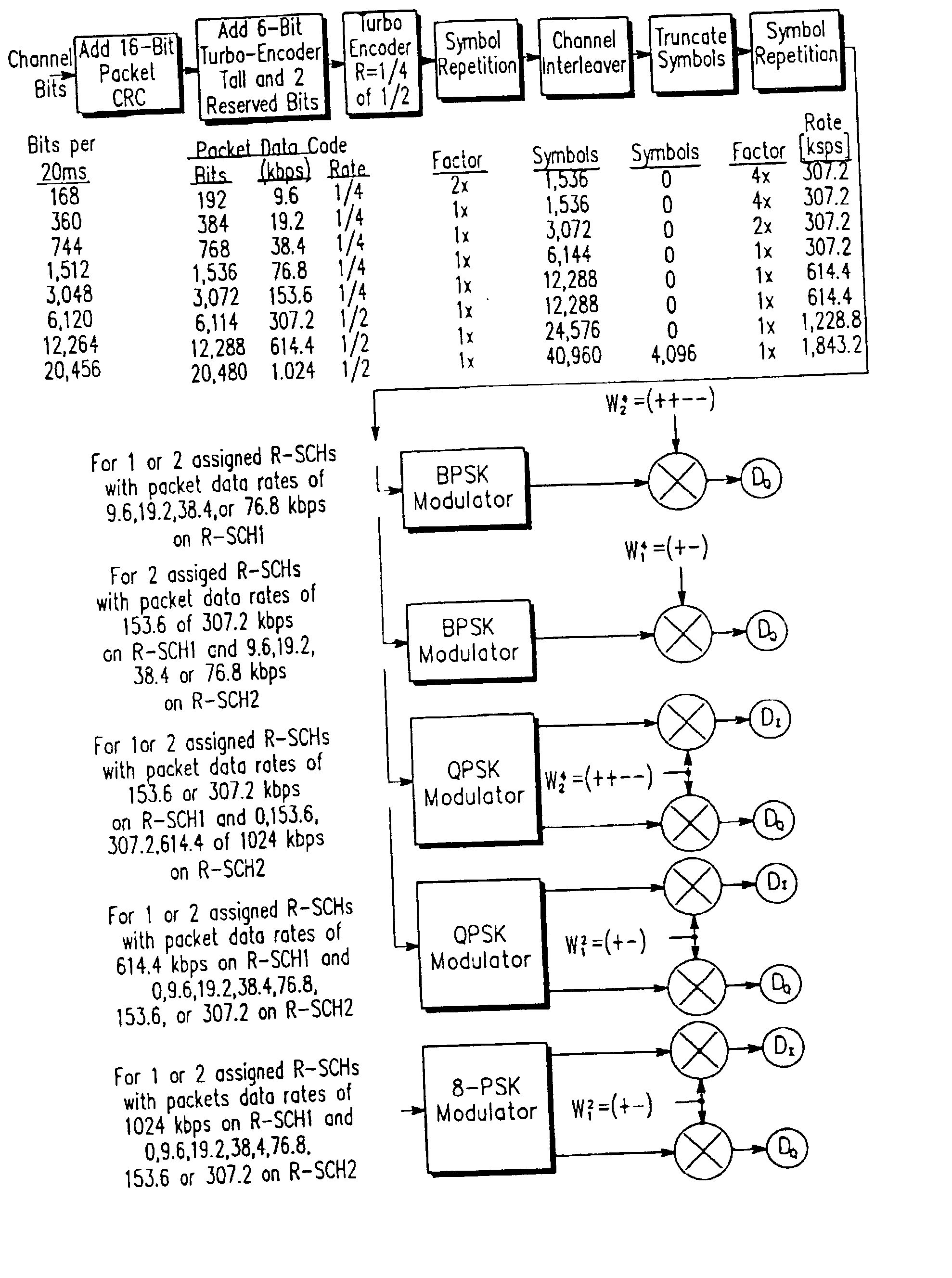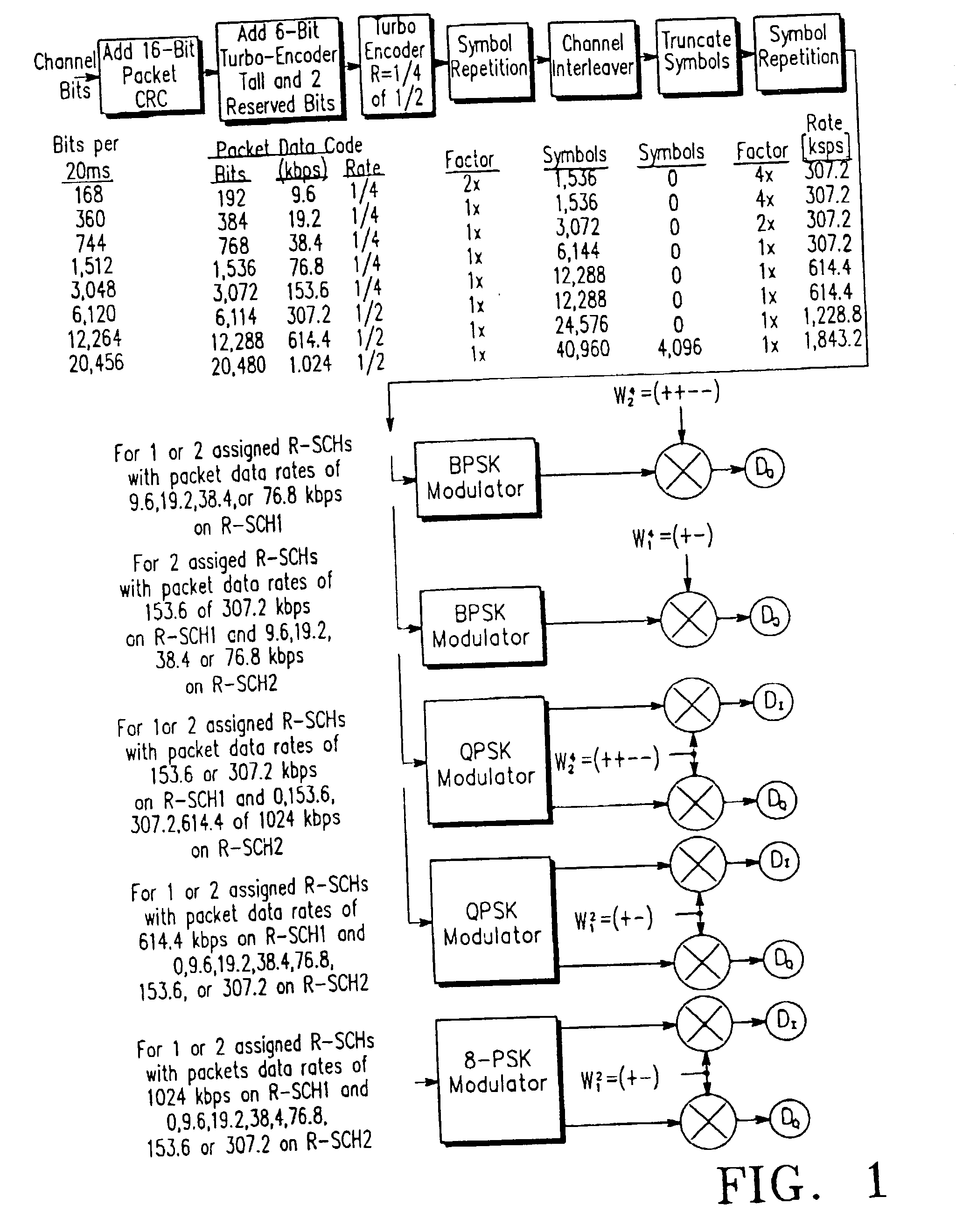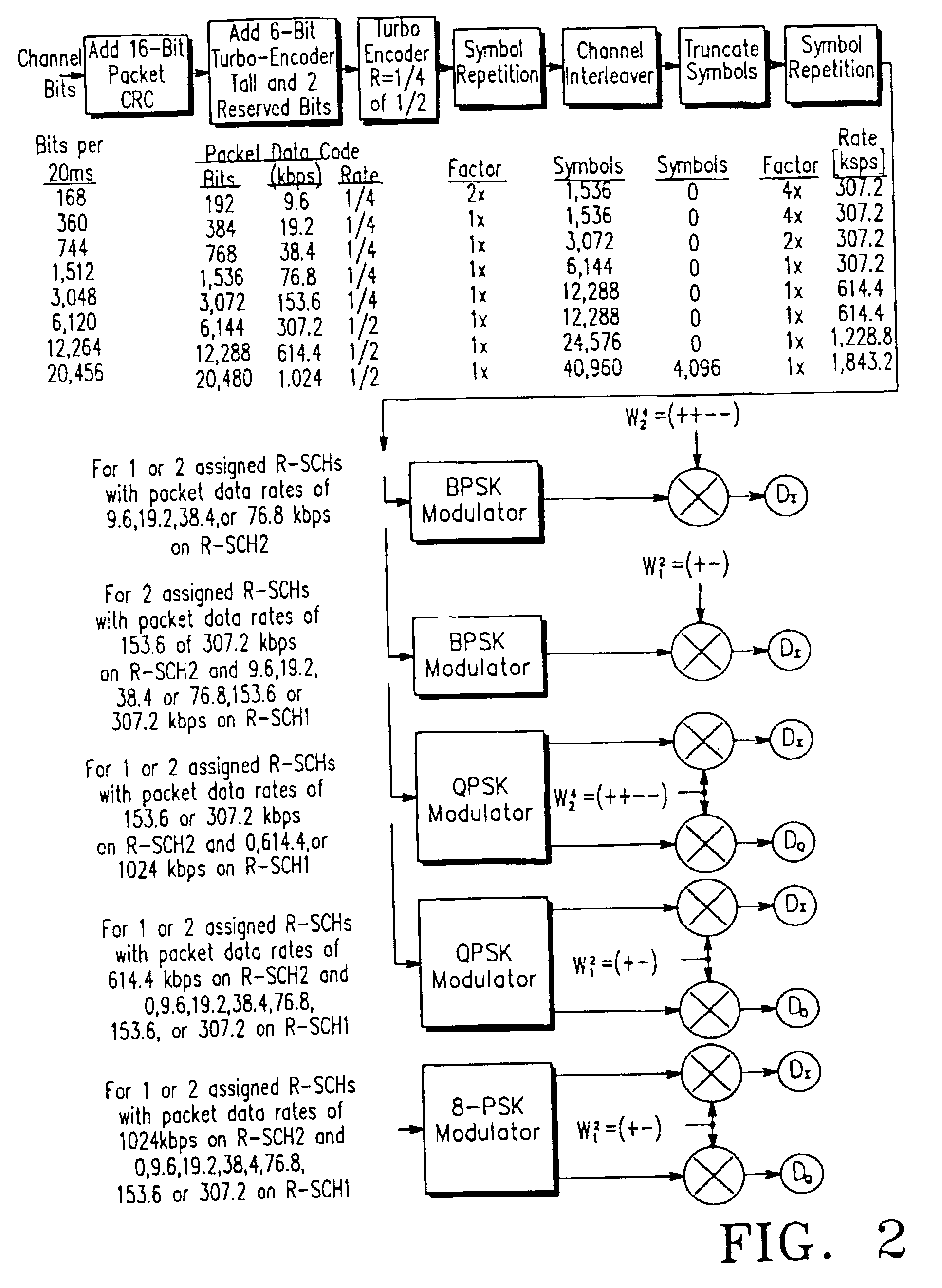Reverse transmission apparatus and method for improving transmission throughput in a data communication system
reverse transmission technology, applied in the field of reverse transmission apparatus and methods for improving transmission throughput in a data communication system, can solve the problems of restricting the s/n control range provided by the rlpc in the 20 msec reverse channel frame, increasing the system throughput, and not supporting the harq using the soft combining in a physical channel
- Summary
- Abstract
- Description
- Claims
- Application Information
AI Technical Summary
Benefits of technology
Problems solved by technology
Method used
Image
Examples
first embodiment
[0072] FIG. 8 illustrates a sub-packet structure and an SPID mapping relationship at a low data rate (e.g., 9.6 kbps to 153.6 kbps) for a sub-packet transmission operation with a low data rate according to the present invention. Here, the code rate is R=1 / 4.
[0073] Referring to FIG. 8, the codewords previously determined according to the SPIDs are used. The SPIDs can be transmitted in a given order. However, two types of SPID mappings are used according to the data rates. The sub-packet is transmitted in the incremental redundancy technique at the low data rate (e.g., 9.6 kbps to 153.6 kbps) where the code rate R is 1 / 4. For example, an R=1 / 4 codeword with SPID=00 is transmitted at initial transmission. At a retransmission request, an R=1 codeword with SPID=01 is transmitted. At another retransmission request, either an R=1 codeword with SPID=01 or an R=1 / 2 codeword with SPID=10 may be transmitted. At a next retransmission request, an R=1 / 2 codeword with SPID=11 may be transmitted. T...
embodiment # 2
EMBODIMENT #2
Retransmission with Symbol Repetition with R=1 / 5 Base Turbo Codes
[0081] As mentioned above, the DTX-based method according to the first embodiment uses a maximum of 75% of the DTX in a 20 msec frame period allocated to the data rates, possibly causing fluctuation of ROT (Rise Over Thermal). To solve this problem, the second embodiment applies the incremental redundancy technique to all the data rates in the following methods.
[0082] The codewords previously determined according to the SPIDs are used.
[0083] The SPIDs can be transmitted in a given order, and have a maximum of 4 redundancy patterns.
[0084] For initial transmission, SPID=00 is used.
[0085] When initially transmitted sub-packet is lost, the sub-packet with SPID=00 can be repeatedly transmitted.
[0086] R=1 / 5 full codewords are used to maximize a coding gain.
[0087] QCTCs are used instead of turbo encoding, symbol puncturing, channel interleaving, and pruning.
[0088] Sub-codes (or sub-packets) are selected by the QC...
second embodiment
[0092] FIG. 10 illustrates a sub-packet structure and an SPID mapping relationship at a low data rate (e.g., 9.6 kbps to 153.6 kbps) for a sub-packet transmission operation with a low data rate according to the present invention. Here, the code rate is R=1 / 4.
[0093] Referring to FIG. 10, the sub-packet is transmitted in the incremental redundancy technique at the low data rate (e.g., 9.6 kbps to 153.6 kbps) where the code rate R is 1 / 4. A redundancy is constructed with an R=1 / 4 initial transmission sub-code with SPID=00 and an R=1 / 2 retransmission sub-code with SPID=10 or SPID=11, or an R=1 retransmission sub-code with SPID=01. The reason for constructing the redundancy in this way is as follows. In most cases, a target FER of initial transmission is low for this class, so the frequency of retransmission requests is not so high. Thus, in many cases, the maximum number of retransmissions is 1. Therefore, the R=1 sub-code with SPID=01 is used for this.
[0094] In addition, there are two ...
PUM
 Login to View More
Login to View More Abstract
Description
Claims
Application Information
 Login to View More
Login to View More - R&D
- Intellectual Property
- Life Sciences
- Materials
- Tech Scout
- Unparalleled Data Quality
- Higher Quality Content
- 60% Fewer Hallucinations
Browse by: Latest US Patents, China's latest patents, Technical Efficacy Thesaurus, Application Domain, Technology Topic, Popular Technical Reports.
© 2025 PatSnap. All rights reserved.Legal|Privacy policy|Modern Slavery Act Transparency Statement|Sitemap|About US| Contact US: help@patsnap.com



